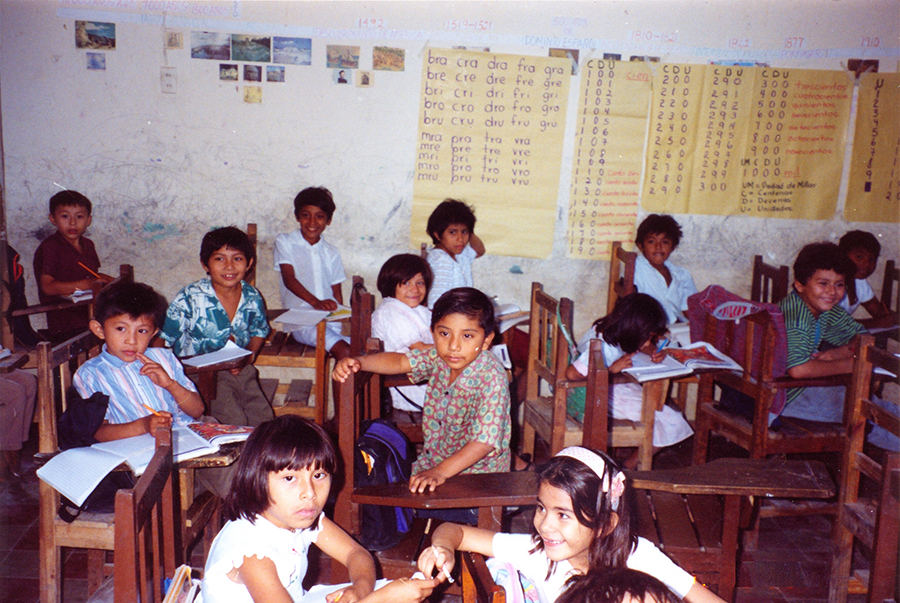Diciembre 2017

Ethnic, socio-economic inequality, by type of settlement among schoolchildren in Yucatan
In the Yucatan peninsula, 60% of the population is indigenous and 40% retain their Mayan language, Yucateca. This people suffer a clear ethnic and social inequality which, at the beginning of the 21st century, is shown by the fact that 30.000 Mayan boys and girls did not attend school and 75% of adults had not finished primary school. The recent development of primary schools which include Mayan culture and traditions and involve the families in their children’s education is improving the situation. It is a joint initiative of the United Nations and local state authorities. 30% of schools in the State of Yucatan are now bilingual Spanish-Mayan.
In 1995 we took part in a research project (funded simultaneously by CINVESTAV of Merida and the W.K. Kellogg Foundation) whose aims were to improve the infrastructure and agricultural production in the family units, assess and train the farmers, present the results we obtained to other farmers and government workers, and to evaluate the impact of this on the health of the inhabitants.
A wide range of indicators of development and size and build, sexual maturity and functional capacity were gathered to compare the underprivileged urban population of Merida and the rural population. The rural sample was from Yaxcaba, a village of around 3,000 inhabitants who speak Maya Yucateca and live mainly from the milpa. The milpa is subsistence farming which uses the natural resources of the forest by cutting and burning, in which women have an important productive role growing maize, sweet potatoes, pumpkins and legumes.
The results clearly show that in Yucatan there is a marked social inequality according to the health indicators. The poorer social classes include both Mayan boys and girls and adults, and rural. The Mayan women and those of rural origin show unfavourable health and a very poor socio-economic state. The poorer children are shorter and weigh less than those of more privileged classes, although the Body Mass Index has recently increased rapidly among adolescents from the poorer strata, which points to worsening in their nutritional health, now due to malnutrition from being overweight.
The points obtained in physical aptitude tests is generally better in the city of Merida than in Yaxcaba, except for manual strength and certain motor activities, which are greater among rural children, activities connected with physical activity and daily lifestyle. The same results were found among urban and rural children studied in Poland and it would be interesting to see similar data from other populations.
Anna Siniarska Wolanska, professor and researcher at the Faculty of Biological Sciences and the Environment, Cardinal Stefan Wyszy?ski University, Warsaw (Polonia).
